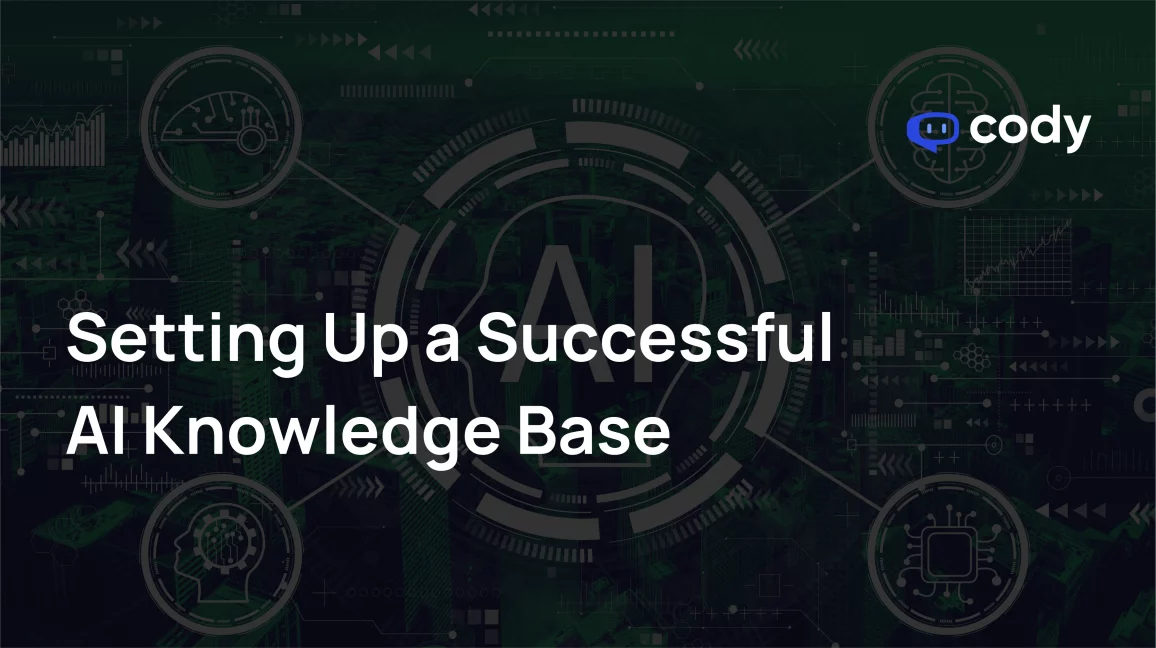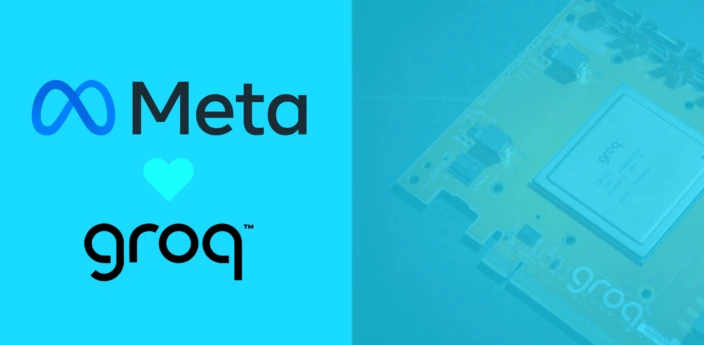
How to Set Up an AI Knowledge Base Software in 2023?
In an evolving customer service arena, where 78% of industry leaders are channeling increased investments into self-service solutions such as self-help portals and AI-powered chatbot assistant capabilities, the importance of integrating an AI knowledge base software into your customer support ecosystem cannot be ignored.
Using AI for business has the power to totally transform how customers interact with it, giving them spot-on information exactly when they need it. However, to make the most of it, you must carefully plan and manage consistently. This blog provides strategies to create an adequate AI knowledge base to improve your customer service experience.
What is an AI Knowledge Base?
An AI Knowledge Base is a digital repository of information and data organized, managed, and made accessible through artificial intelligence (AI) technologies. It is a centralized resource for storing, retrieving, and sharing knowledge, typically in a structured and searchable format.
AI is used to enhance the functionality of the knowledge base by enabling intelligent search, content recommendations, natural language processing, and other features that improve the user experience.
Here are some key characteristics and components of an AI Knowledge Base:
1. Information Repository
It contains a wide range of content, including articles, documents, FAQs, product information, instructional materials, and any other data an organization or platform wishes to make available to users.
2. Structured Organization
The content in the knowledge base is typically organized in a structured manner, using categories, topics, tags, and hierarchies to help users navigate and find relevant information efficiently.
3. AI-Powered Search
AI technologies, such as natural language processing, are used to enhance search capabilities. Users can enter queries in natural language, and the AI system can understand and provide relevant search results.
4. Content Recommendations
AI can analyze user behavior and preferences to offer personalized content recommendations, suggesting articles or resources likely to interest the user.
5. Chatbots and Virtual Assistants
Many AI knowledge bases integrate chatbots or virtual assistants to provide real-time support and answer user queries. These chatbots can use AI to understand and respond to user inquiries effectively.
6. Natural Language Processing (NLP)
NLP is used to understand and process human language, making it easier for users to interact with the knowledge base and obtain relevant information.
7. Sentiment Analysis
Some AI knowledge bases incorporate sentiment analysis to gauge user satisfaction and identify areas where improvements are needed.
8. Content Tagging and Classification
AI can automatically tag and categorize content, making it easier to manage and search for information.
9. Analytics and Reporting
The knowledge base often includes tools for tracking user engagement, such as page views, search queries, and user feedback. This data is valuable for improving the knowledge base’s content and structure.
10. Access Control and Security
AI knowledge bases may include access control features to restrict certain content to authorized users, and they implement security measures to protect sensitive information.
AI Knowledge Bases are widely used in various domains, including customer support, internal company knowledge management, e-learning platforms, and online documentation. They help organizations provide timely and accurate information to their users, reduce support costs, and improve the overall user experience by leveraging AI’s capabilities to enhance knowledge access and retrieval.
What is the Checklist to Set Up a Successful AI Knowledge Base Software?
Setting up an AI knowledge base involves organizing and storing information in a structured and accessible manner and using artificial intelligence to retrieve and present that information effectively. Here is the complete checklist to set up an AI knowledge base:
Define Your Goals and Objectives
Start by clarifying your goals and objectives for the knowledge base.
- What information do you want to store and retrieve?
- What is the purpose of the knowledge base?
- Who is the intended audience?
Choose a Knowledge Base Platform
Select a platform or software to host your knowledge base. Various options include custom-built solutions, content management systems (CMS), and knowledge base software like Confluence, Zendesk, or KnowledgeOwl.
Organize and Structure Content
Categorize and structure your content logically. Create a taxonomy or hierarchy of topics, categories, and subcategories. This will make it easier for users to find information.
Create and Input Content
Populate the knowledge base with relevant content. This content can include articles, FAQs, documents, videos, and any other valuable information to your audience.
Implement Search and Navigation Features
Implement a powerful search engine that can quickly retrieve relevant content. Additionally, provide clear navigation menus and links to help users browse the knowledge base easily.
Implement AI Technology
Integrate AI technologies to enhance the knowledge base’s functionality. Here are some AI capabilities to consider:
Natural Language Processing (NLP)
NLP can help with search, query understanding, and content recommendations.
Chatbots and Virtual Assistants
Deploy chatbots for user assistance and answering common questions.
Machine Learning for Content Recommendations
Use machine learning algorithms to suggest relevant articles based on user behavior.
Content Tagging and Classification
Automatically tag and categorize content using AI algorithms.
Sentiment Analysis
Analyze user feedback and comments to gauge user satisfaction and identify areas for improvement.
User-Friendly Design
Ensure a user-friendly and responsive design for your knowledge base. It should be accessible on various devices and screen sizes.
Regularly Update and Maintain:
Keep your knowledge base current by regularly adding new content, revising existing content, and retiring outdated information.
User Feedback and Analytics
Gather user feedback and analyze analytics to understand how users interact with the knowledge base. Use this data to make improvements.
Training and Monitoring
Continuously train and monitor AI models to improve their accuracy and performance, especially in the case of NLP and chatbots.
Security and Access Control
Ensure that sensitive information is properly secured and access to certain content is restricted to authorized users.
Promote and Educate
Promote the knowledge base within your organization or to your target audience. Provide training and resources to help users maximize the knowledge base.
Scale and Evolve
As your organization grows and user needs change, be prepared to scale and evolve your AI knowledge base accordingly.
Setting up an AI knowledge base can be a complex task, but it can provide substantial benefits regarding information accessibility, user support, and productivity. Remember that the specific implementation may vary based on your organization’s unique requirements and resources.
How to Produce High-Quality Content for AI Knowledge Base Software?
You can produce high-quality content by analyzing your audience’s needs and behavior, being organized with your content, and leveraging visual assistance. Creating quality content is the basis of a successful AI knowledge base. When your content is well-structured, relevant, and packed with helpful info, your customer support game reaches new heights. In this section, let’s find out how to create content that’s simply top-notch.
Know Your Audience Well
Start by pinpointing your customers’ needs and the challenges they face. Design your content to be the solution they’re looking for. Understanding your audience is the key to creating content that genuinely connects.
When dealing with all the technical stuff, spare your customers from drowning in jargon. Keep it simple. And if you have to drop a complex term, break it down in plain language. Your goal is to make things easy to understand.
For example, you’re running a tech support AI knowledge base. If your audience includes both tech-savvy individuals and those who aren’t so tech-savvy, you’ll want to strike a balance. When explaining something like “RAM,” you could say:
“RAM, which stands for Random Access Memory, is like your computer’s short-term memory. It helps your computer run smoothly by temporarily storing information while you use it. Think of it as a quick-access storage space, and when you turn off your computer, it gets wiped clean.”
This way, you’re simplifying the technical term “RAM” and making it more understandable for all types of users.
Be Clear and Organized
Think clarity and brevity when creating content for your AI knowledge base. Utilize bullet points and subheadings to improve readability, making it easier for customers to absorb information. Keep in mind lengthy, heavy text can be a turn-off for your audience.
Suppose you’re creating a knowledge base article about troubleshooting common Wi-Fi issues. Instead of writing a long paragraph, you can structure it like this:
Title: Troubleshooting Wi-Fi Connection
Issue 1: Slow Internet
- Check the number of devices connected.
- Restart your router.
- Move closer to the router.
Issue 2: No Wi-Fi Connection
- Restart your device.
- Verify router power.
- Re-enter the Wi-Fi password.
Using bullet points and subheadings this way makes the information much more accessible and less overwhelming for readers.
Incorporate Visual Aids
To make things clearer for your customers, consider adding images, diagrams, or videos. These visual aids are a game-changer for simplifying complex concepts or offering step-by-step instructions. They can significantly improve understanding and improve the overall user experience.
Suppose you want to guide users on how to install software. You could use a step-by-step video that visually walks them through the process, making it much easier for them to follow along and complete the installation.
Maintain Updated Content When Setting Up AI Knowledge Base Software
To ensure your knowledge base always serves up accurate and on-point information, keeping it fresh and up-to-date is a must. Stay in the loop about product changes, policy updates, and customer feedback. Regularly go back to your content to ensure it’s spot on. Here are some tips to help you maintain your content effectively:
Pay Attention to Customer Input
Focus on what your customers are saying – their responses, questions, and even complaints. This can help you spot any gaps or issues in your content. Customer feedback reveals areas needing improvement or suggesting new topics to cover. Make the most of your knowledge base system’s internal tools to keep a watchful eye on and even ask for feedback.
Let’s say you’re running an e-commerce website, and you’ve set up an AI knowledge base to handle customer inquiries. By monitoring customer interactions, you notice many users are asking questions about your return policy, but this topic isn’t well-documented in your knowledge base.
This customer feedback highlights a potential gap in your content. To address it, you can create a comprehensive article or FAQ section dedicated to your return policy.
Periodically Check Existing Content
It’s a good practice to regularly review your knowledge base content to confirm its accuracy and relevance. Update and revise it to ensure customers always have the latest information. Some AI tools can even help you spot outdated content, saving your team valuable time.
For instance, if your knowledge base contains information about your company’s products or services, and you’ve recently launched a new version or updated a feature, it’s essential to go back and ensure that the documentation reflects these changes.
Evaluate Content Effectiveness
Keep an eye on content analytics to figure out which articles or topics customers love and which ones might need a little boost. By studying user engagement and interactions, you can get some valuable clues on how to make your content even better. It’s like peeking behind the curtain to understand what your customers really want.
For example, if you notice that a particular article on troubleshooting common tech issues gets many views and positive comments, it’s a clear signal that customers find it helpful.
On the other hand, if you see low engagement with an article about a complex process, it might be a sign that it needs some simplification or additional explanation. Monitoring content analytics is like having a continuous feedback loop with your audience, helping you fine-tune your content for maximum effectiveness.
Read More: How Does an AI-Powered Knowledge Base Bot Work?
Meet Cody – Your AI Knowledge Base Software for Business
The heart of customer service lies in the personal touch and empathy that only humans can provide. However, AI can be crucial in creating a robust knowledge base.
An AI knowledge base aims to support customer service agents by handling routine queries, allowing humans to address complex and sensitive issues that require empathy and judgment. This combination of efficiency and personalized care ensures an exceptional customer service experience. Here’s the perfect example:
Click Here to Meet Cody!😉



